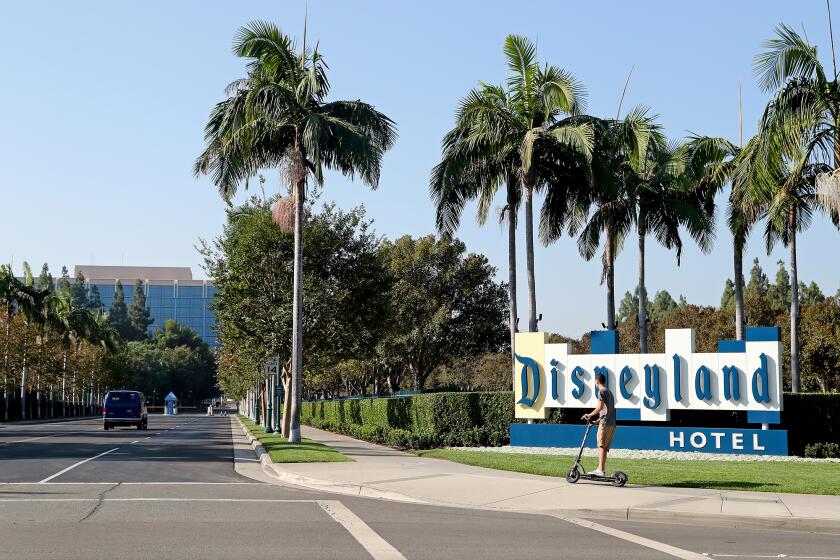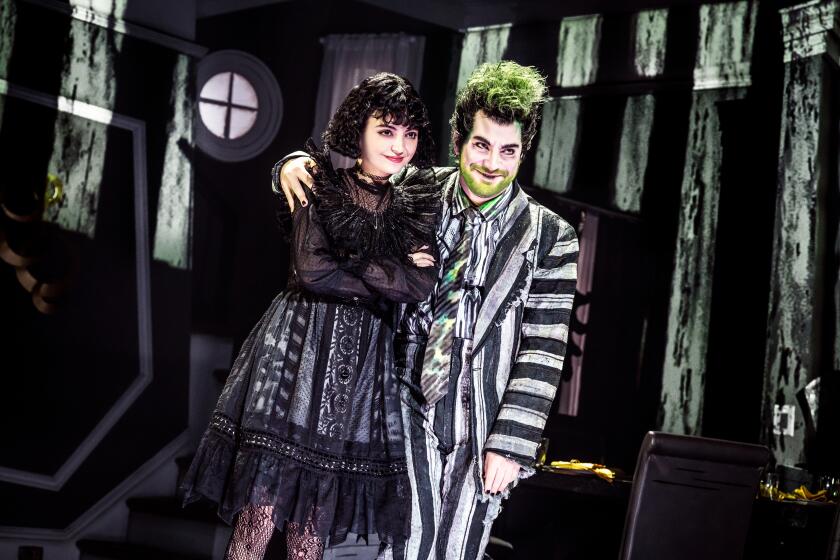‘We did our part’
Masao Masuda keeps a notebook in his dining room drawer containing a photo of the last time he saw his brother Kazuo.
The picture, which Masao took in 1941, shows Kazuo and their brother Takashi, along with several sisters and a niece, at the Santa Fe Depot ready to board the train for camp. The brothers were drafted on the same day in October. The Japanese attacked Pearl Harbor two months later.
Those two events set off a chaotic half-decade for the Masudas, one of the Japanese immigrant families who came to farm the land that later became Fountain Valley. The night after Pearl Harbor, Orange County sheriff’s deputies took their father away for questioning. Days later, after an FBI interrogation, he was confined for five months at a stockade in Montana.
The entire family soon found itself in a similar situation, as the government shipped them from Fresno to Arkansas to Arizona while the sons risked their lives overseas.
“That was a dirty deal for us, being a citizen,” said Masao, 94, a retired farmer who still lives in Fountain Valley. “They took our civil rights away and put us in an internment camp.”
Wednesday, the Masuda brothers received a much better deal for being citizens. The government awarded the Congressional Gold Medal to every member of the 100th Infantry Battalion, 442nd Regimental Combat Team and Military Intelligence Service — collectively known as the “Go for Broke” troops — who served in World War II.
For Kazuo, who has a Fountain Valley middle school and a Veterans of Foreign Wars post named after him, it will be another recognition among many. But the Congressional Gold Medal, like so many of those honors, will be a posthumous one: The Huntington Beach High School graduate died in August 1944 on a night patrol in Italy.
So it will be up to his family, again, to receive his award for him. Masao, the only survivor among 11 siblings, plans to arrange to have the medals shipped to him in Fountain Valley.
“Oh, yes, he would have been proud,” Masao said. “We’re all proud. We did our part in the war.”
*
Hard-won decorations
In February 1942, President Franklin Roosevelt authorized the internment of Japanese Americans, and about 110,000 were soon moved to war relocation camps. Even while young men like the Masuda brothers faced prejudice at home, though, they proved invaluable to the war effort.
The 100th Infantry Battalion, which consisted almost entirely of Japanese American volunteers, formed in Hawaii in 1942. According to the Army News Service, the group developed such a reputation for bravery that it became known as the Purple Heart Battalion. It merged two years later with another segregated group, the 442nd Regimental Combat Team.
Ultimately, three Masuda sons would serve on the “Go for Broke” team — Kazuo and Takashi with the 442nd, Masao with intelligence. Shortly before his death, Kazuo earned the Distinguished Service Cross for bravery after fending off a Nazi artillery stronghold.
Still, the Masudas, like many others, faced more discrimination as the war ended. In 1945, a group of men who called themselves the Native Sons of the Golden West paid daughter Mary Masuda a visit and told her she and her family would be in danger if they stayed in town.
The family held its ground, and after the story drew national attention, Four-Star Gen. Joseph Stilwell came to the Masuda home to present Mary with her late brother’s Distinguished Service Cross. The Japanese American community, though, had to petition the government to allow Kazuo to be buried at Westminster Memorial Park in 1948; the cemetery’s board president initially permitted the burial only in a plot without trees or lawn because he was of Japanese ancestry.
Four decades later, then-President Ronald Reagan signed the Civil Liberties Act of 1988, which appropriated $20,000 to each surviving internee and started an educational trust fund to promote awareness of the camps. Last year, President Obama signed a bill awarding the Congressional Gold Medal to all members of the “Go for Broke” troops.
Wednesday, Congress honored the surviving veterans and their families at a ceremony at the United States Capitol in Washington, D.C.
*
A hometown hero
Kazuo Masuda, though, had already become a household name around Fountain Valley.
In 1957, a group of World War II veterans formed a VFW Post in Garden Grove and called it the Kazuo Masuda Memorial Post. Nori Uyematsu, the post’s former commander, said the founders considered their namesake a hero as well as a hometown friend.
“Some of them did know him,” he said. “Some of them may even have gone to high school with him as well.”
The post remembers Kazuo in another way: Every year on Memorial Day, it holds a ceremony by his grave in Westminster Memorial Park, with representatives from the middle school and Japanese American organizations in attendance.
The Fountain Valley School District dedicated Kazuo Masuda School, now Kazuo Masuda Middle School, in December 1975. Just inside the front doors at 17415 Los Jardines West in Fountain Valley hangs a large black-and-white portrait of Kazuo in uniform above a display case filled with military certificates and eight colorful medals: the Bronze Star, Purple Heart and others.
Outside, a Japanese-style garden features three large rocks that represent different aspects of the world — a tall, straight one for heaven, a flat one for earth and an inclined one for humanity — next to a VFW dedication plaque dated June 7, 1977.
Principal Christopher Mullin said Kazuo is more than a namesake to students. Teachers often cite him in World War II lessons, and the school discusses his family’s history in its annual Veterans Day assembly, scheduled for 9 a.m. Nov. 10 this year.
When Mullin heard about the Congressional Gold Medal, he called it both an honor and a vindication.
“He really stepped up and gave his life for this country, even though, at that particular time, he wasn’t necessarily well-liked for his particular origin,” Mullin said. “He still loved his country enough to give the ultimate sacrifice.”
Twitter: @MichaelMillerHB
All the latest on Orange County from Orange County.
Get our free TimesOC newsletter.
You may occasionally receive promotional content from the Daily Pilot.



